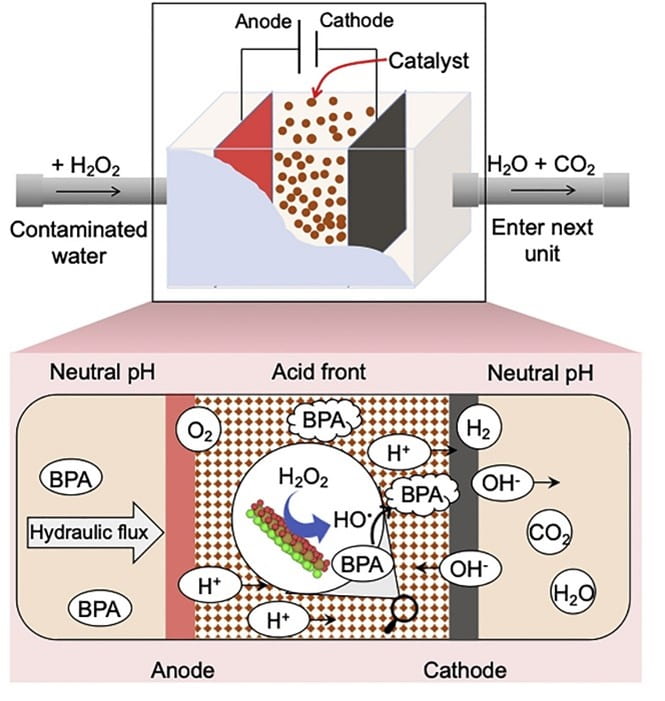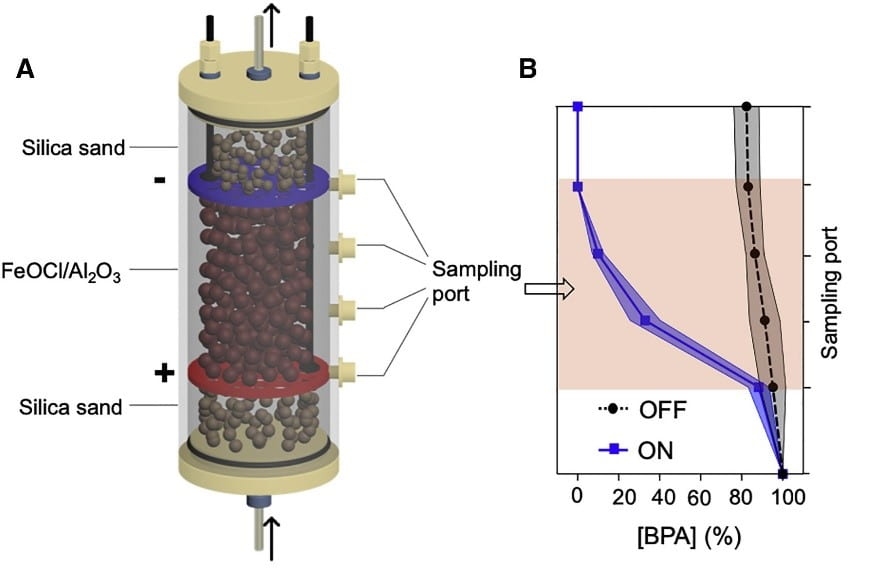PROTECT Researchers Develop Robust Flow-Through Platform for Contaminant Removal
PROTECT Project 4 researchers focus on development of treatment platforms that effectively remove organic pollutants in water at a low-cost. Toxic organic chemicals from Superfund sites have long been a threat to drinking water resources and human health. The Fenton and Fenton-like water treatment processes generate hydroxyl radicals, which have a strong oxidation potential and can destroy organic contaminants in water. The Fenton process is rapid; however, it may produce an iron sludge, which would require removal and increase treatment costs. On the other hand, utilization of a Fenton-like process that limits sludge generation will result in a slower reaction rate under a highly acidic environment.
In a paper published in Cell Reports Physical Science, Project 4 researchers presented their work on developing a water treatment process that efficiently operates in water bodies of all pH levels without generating iron sludge. The team utilized an iron oxychloride (FeOCL) catalyst that increases the yield of hydroxyl radical generation within an Electro-Fenton-like (EFL) reaction. They then developed an electrolytically localized acidic compartment. The process facilitates a Fenton-like reaction by creating a localized acidic region using electrochemical water splitting under flow-through conditions. The acidic pH produced by the process increases the yield of the oxychloride reactors. The process builds upon previous work and findings that electrochemistry holds promise for automatic pH regulation.

A schematic representation of the flow-through platform and process.
Once developed, the team assessed the strength of the process using Bisphenol A (BPA) as a model contaminant. The technology removed 91 to 97% of BPA from contaminated surface water and groundwater samples. The BPA removal changed to 84 to 100% when using the treatment for BPA removal from alkaline water. Application of the EFL process improved BPA removal efficiency from 22.4% to 100% in pH-neutral water.
The EFL platform successfully treats a variety of water bodies and does not generate ferric sludge. This not only lowers the capital and chemical costs of the treatment process but makes it more environmentally friendly. The platform is furthermore easy-to-install, making it more affordable and compatible with other units of centralized water treatment facilities. The platform can also be redesigned for individual use rather than just in electrical grids. The platform shows strong stability, having potential to be used long-term, tolerate high flow-rate, and be effective in complex water chemistry. The robust performance of the process shows promise and further pushes forward Project 4’s goal to develop a highly effective remediation system that removes organic compounds from water.

A) An illustration of the device components.
B) The BPA removals from each sampling port.
